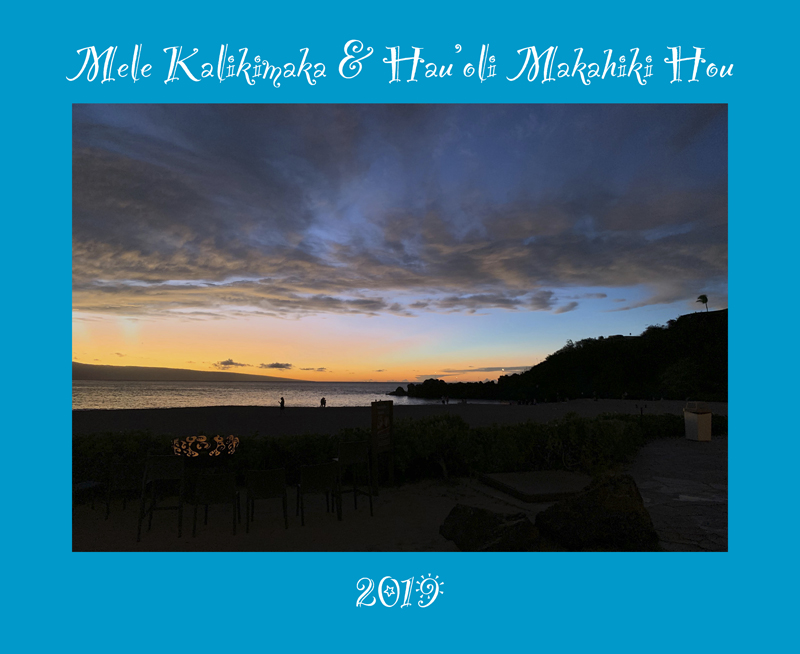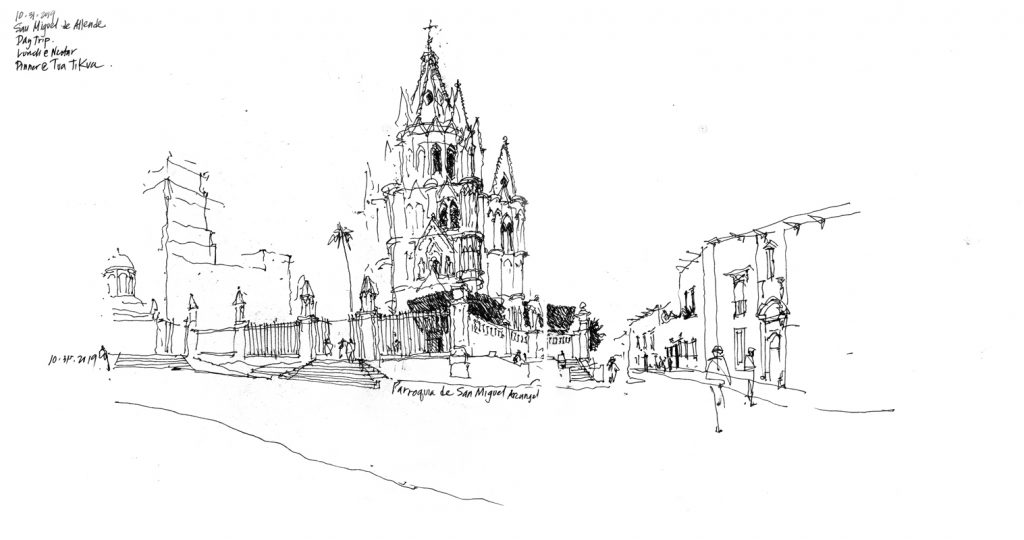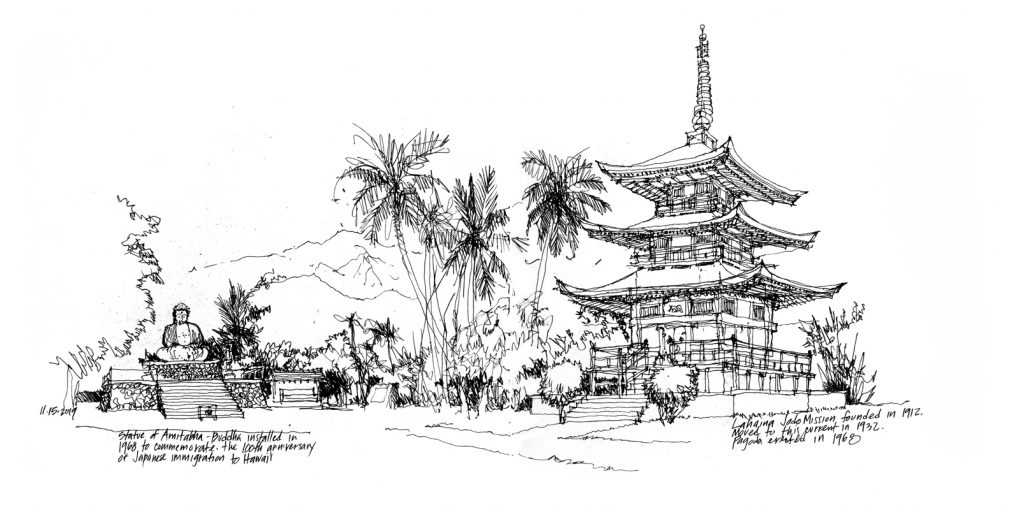
Season’s Greetings to One and All.


Season’s Greetings to One and All.

Visiting Swansons Nursery’s annual Reindeer Festival last week, I drew a few vignettes of the featured stars, Dasher and Blitzen. These incomplete views had to be done quickly because of the reindeers’ constant moving about. This exercise reminded me of how drawing from observation sharpens our visual acuity and helps us notice often subtle traits or characteristics. For example, I had always assumed that deer antlers grew symmetrically, but these reindeer had antlers that were not symmetrical at all. In doing some research, I came upon what biologists call fluctuating asymmetry in deer antlers, which can be caused by a variety of genetic and environmental stresses. In addition, these reindeer had a multipronged tine extending over their foreheads on one antler but not the other. This extra blade was supposedly used as a snowscraper!

San Miguel Arcángel was built in the late 17th century in the colonial Baroque style, but in the 19th century, a local builder Zeferino Gutiérrez Muñoz was asked to rebuild the towers and facade that had suffered substantial cracking over the years. He was a bricklayer by profession and so he relied on a postcard of Cologne Cathedral in Germany for inspiration. The result is a massive pseudo-Gothic structure that has become the iconic emblem of San Miguel de Allende, 50 miles west of Querétaro.
This sketch, done quickly as a demo, is an example of how it is possible not to complete every detail or part of a scene, especially when drawing symmetrical compositions. It is often enough to merely suggest one part and then let the imagination of the viewer complete the view.

The Lahaina Jodo Mission is a Buddhist temple founded in 1912 by Gendo Saito with the support of the Japanese immigrants working in the island’s sugar and pineapple plantations. The three-tiered pagoda serves as a columbarium and contains the urns of deceased members.
The celestial buddha, 12 feet high and weighing 3 1/2 tons, was installed in June 1968. On a nearby plaque is inscribed the following: “This image of Amitabha-Buddha was erected here at the picturesque seashore of Lahaina, the capital of the ancient Hawaiian Dynasty, in celebration of the centennial anniversary of Japanese immigration to the Hawaii (sic) Islands…”